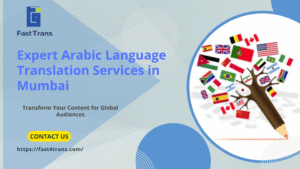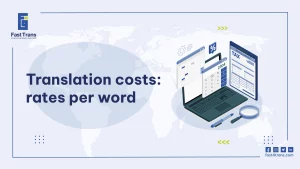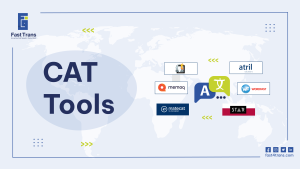Arabic translation requires a deep understanding of both text and context. Context includes the target audience, cultural nuances, and intended tone. By understanding these factors, translators can accurately convey meaning and avoid cultural misunderstandings. Linguistic and situational context also play a crucial role, ensuring accurate word choice and appropriate cultural references. Ignoring text and context in Arabic translation can lead to mistranslations and misinterpretations, especially in specialized fields like law and medicine. Therefore, a thorough understanding of context is essential for producing high-quality, culturally sensitive Arabic translations.
What is text and context in Arabic translation?
Consequently, in Arabic translation, context refers to the situational and linguistic aspects of a text. It answers questions like:
- To whom is this text/document/content targeted (e.g., specific region, age group, social class within the Arab world)?
- What important events does it refer to (e.g., historical events, cultural celebrations relevant to the target Arabic-speaking audience)?
- What is the intended tone of voice that needs to be delivered, and why (e.g., formal, informal, humorous, serious, considering the nuances of Arabic register)?
- What does the writer want to address (considering the specific cultural and social context of the target Arabic-speaking audience)?
- What function does this text do (e.g., inform, persuade, entertain, within the context of Arabic communication norms)?
- What are the cultural references implicated in this text (e.g., proverbs, literary allusions, religious or social customs specific to the target Arabic-speaking culture)?
In short, it’s like giving keys to the translator that are necessary for understanding the essence of their project, and therefore help them perform it well.
Therefore, a translator goes into the background of the text to understand the text. They first decontextualize the text, to re-contextualize it into Arabic.
For example, the idiom ‘Under the weather’ in English risks ambiguity without context. In one sense it could mean ‘feeling sick or ill’, in another it could attain its literal meaning. This ambiguity needs careful consideration when translating into Arabic, where the equivalent expression might vary depending on the specific Arabic dialect and cultural context.
Text and context in Arabic translation
Imagine you’re working on a website or App translation from English to Arabic. One element of visual context would be how the text appears on the user interface in real-time.
This is extremely helpful, given the factor of text expansion or retraction. When translating from one language to another, the word length between languages varies, which affects how your website and application look to the audience. Specifically with Arabic, this is crucial due to its right-to-left script and often longer word forms compared to English. Providing that kind of visual context can shortcut many back-and-forth between translators and the design team.
linguistic context
Any word in a given text gains or loses meaning or value according to its relation to other words next to it and to the whole text at large.
It occurs many times in academic research papers that one word, let’s say ‘colonialism’ is associated with several meanings and impressions, sometimes you will find in one paper that a central expression gains or loses meaning depending on the researcher’s analysis and findings. Therefore, the word ‘colonialism’ in the introductory paragraphs might refer to a general conception of ‘the effects of colonial history’, and later it might gain additional meanings like ‘the mini scale colonial influence that people have on each other’. This is particularly relevant in Arabic translation, where nuances in meaning can be conveyed through subtle variations in word choice and sentence structure.
A straightforward example of linguistic context is of the word ‘tie’, it could refer to a ‘knot’, or a ‘draw’ in a match. This applies to Arabic as well, where a single word can have multiple meanings depending on the surrounding words.
Situational Context
The situation context is the set of factors (body language, and cultural and political references) that define a text.
In English, the word “thumbs up” is often used to indicate approval or that everything is okay. However, in some cultures, such as in parts of the Middle East and West Africa, the gesture is considered rude or offensive, or at least not used as pervasively. This cultural sensitivity is paramount in Arabic translation, where gestures and cultural norms can significantly impact the reception of a message.
Moreover, sometimes the process of recontextualizing entails appropriating certain religious or cultural aspects to the target reader. For example, when translating for an Arabic-speaking audience, it’s important to be aware of Islamic sensitivities and adapt the language and imagery accordingly.
In some Western cultures, the color white is often associated with weddings, symbolizing purity and new beginnings. However, in some Eastern cultures, such as Chinese and Hindu, white is traditionally worn at funerals and is associated with mourning and death. This difference in cultural associations is crucial to consider when translating for different audiences, including those who speak Arabic, as cultural norms vary across the Arab world.
Read more: Types of Translation
Why use text and context in Arabic translation?
Context is particularly crucial for professional Arabic translators, let’s quickly sum up its benefits below:
- Provides necessary information to help avoid translation inaccuracies in Arabic.
- Establishes the tone, style, and register of the Arabic text.
- Provides clues for the meaning of words and terms in Arabic to solve ambiguity.
- Helps translators accurately translate Arabic homonyms.
- Unveils cultural background and references relevant to the Arabic language and culture.
It’s crucial in avoiding critical errors, especially in highly specialized Arabic translations like legal, manufacturing, or medical ones.
Read more: Choosing а Translation Services Vendor: In-House, Freelance, or Outsource?
Common problems that can occur when translators don’t take context into account
Translators who ignore context risk mistranslating idioms, cognates, and technical terms, leading to inaccurate and potentially harmful results. This failure to understand intent can distort meaning, especially in fields like healthcare and law, where precision is crucial.
1. Idiomatic expressions
Idioms are probably one of the most recurrent textual elements that require a solid understanding of the contexts. Idioms are culturally generated creative ways of expression. Translating them requires searching for their idiomatic alternative in the target language if it exists. Understanding the context saves translators from attempting silly literal translations of idioms.
2. Cognates translation
Cognates are words in two languages that have a similar meaning, spelling, and pronunciation due to their common origin.
Two words that look similar in different languages could have the same meaning, or could not!
The words Nation and Information are the same in Spanish “nación” and “información”. This is a cognate.
However, what do you think of the word “embarazada” in Spanish? It might occur to you that it’s a cognate of “embarrassed” in English, which is not quite true.
“Embarazada” means pregnant, yet it looks similar to the word “embarrassed”. This is just one example of how context could dodge such an annoying mistranslation.
3. Inconsistent Terminology
Context helps translators choose the appropriate terminology for a specific subject or industry. Without context, the use of terminology might take a blow, not only might they be inconsistent, but they might also not match the text.
4. Failure to Capture Intent
Context mediates the writer’s intent and tone. Without enough context, the translator might misinterpret such linguistic factors, which can drive the translation in a different route. This is quite evident in literary translations which not only require a professional translator, but also someone who has a sense of the literary effect.
5. Real Life Consequences
In various fields, inaccurate translations can have significant consequences. For instance, in healthcare, they can lead to fatal errors, while in legal contexts, they might result in wrongful convictions, or result in losing the credibility of the legal document when the translation misinterprets or changes the context.
Fast Trans your go-to translation company
Fast Trans prides itself as your go-to translation company across the MENA region, but why exactly so?
We have gathered up an in-house and outsourced team of certified translators who have demonstrated years of experience in more than 20+ translation services. Over the years, Fast Trans has gained the experience of giant real estate clients like Emmar, ZED International, and Orascom Developments, in addition to other loyal clients like Etisalat, and Honeywell.
In other words, we know what it takes to deliver high-quality translations fast at a competitive price compared to other translation companies in the market.
Your journey with Fast Trans starts right here.
Conclusion
Arabic translation hinges on a deep understanding of both text and context. Context encompasses the situational and linguistic elements surrounding a piece of writing. This includes considering the target audience within the Arab world (region, age, social class), relevant cultural and historical events, the intended tone and purpose of the text (inform, persuade, entertain), and any cultural references, proverbs, or allusions specific to the target Arabic-speaking culture. Analyzing these contextual factors is crucial for accurate and culturally appropriate Arabic translation, allowing translators to “decontextualize” the source material before “recontextualizing” it effectively in Arabic. This ensures that the translated text resonates with the intended audience and achieves its communicative goals within the specific cultural landscape of the Arab world.
The interplay of text and context in Arabic translation is important due to the language’s nuances and cultural sensitivities. Linguistic context, how words relate to each other within the text, is vital for accurately conveying meaning, especially with words that have multiple interpretations depending on their surrounding words. Situational context, including cultural and political references, body language, and gestures, adds another layer of complexity. For example, a seemingly simple gesture can have vastly different meanings in different cultures, making cultural awareness essential for effective communication. Ignoring context can lead to mistranslations of idioms, cognates, and technical terms, resulting in inaccuracies and potentially harmful consequences, especially in specialized fields like law and medicine. Therefore, a thorough understanding of both text and context is paramount for producing high-quality, culturally sensitive Arabic translations.











